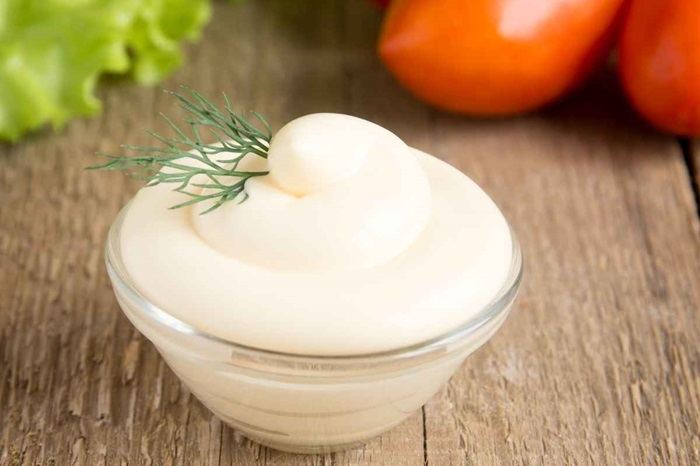Mayonnaise, a beloved condiment worldwide, takes on unique flavors and cultural significance in Mexico. Mexican mayonnaise, or “mayonesa,” has its own distinct characteristics that set it apart from its counterparts around the globe. This article explores the essence of Mexican mayonnaise, its ingredients, preparation methods, cultural importance, and how it can elevate your dishes. Whether you’re a culinary enthusiast or simply curious about international cuisines, this guide will provide valuable insights into this versatile condiment.
Understanding Mexican Mayonnaise
To appreciate what makes Mexican mayonnaise special, let’s break down its components:
Base Ingredients: Eggs, vinegar or lemon juice, oil, and sometimes mustard.
Texture: Typically creamier and smoother than American mayonnaise.
Flavor Profile: Rich, tangy, with a hint of sweetness or spice depending on variations.
Nutritional Value: Provides essential fats and proteins but should be consumed in moderation due to calorie content.
The Cultural Significance of Mayonnaise in Mexico
Mayonnaise plays an important role in Mexican cuisine and culture:
Historical Background: Introduced by European settlers, mayonnaise quickly became integrated into local cooking traditions.
Culinary Use: Featured prominently in sandwiches, salads, dips, and sauces.
Symbolism: Represents fusion and innovation in Mexican food culture.
Economic Impact: Major brands contribute significantly to the economy through production and sales.
Health Benefits: Recognized for its ability to bind ingredients together, enhancing flavor and texture.
Traditional Mexican Dishes Featuring Mayonnaise
Several classic Mexican dishes highlight the use of mayonnaise:
Tacos de Pescado
Description: Fish tacos often come with a creamy chipotle mayo sauce.
Cultural Importance: Popular street food item that showcases coastal influences.
Papas Rellenas
Description: Stuffed potatoes coated in breadcrumbs and fried, served with a mayonnaise-based dipping sauce.
Cultural Importance: Common at family gatherings and festive occasions.
Ensalada de Noche Buena
Description: Christmas Eve salad made with beets, apples, nuts, and mayonnaise dressing.
Cultural Importance: Traditional holiday dish symbolizing abundance and unity.
Grilled Corn (Elote)
Description: Corn on the cob slathered in mayonnaise, cheese, chili powder, and lime juice.
Cultural Importance: Street snack enjoyed year-round, especially during festivals.
Chiles Rellenos
Description: Stuffed poblano peppers often accompanied by a creamy mayonnaise-based sauce.
Cultural Importance: Represents a blend of indigenous and Spanish culinary elements.
How to Make Mexican Mayonnaise at Home
Creating authentic Mexican mayonnaise can be simple yet rewarding. Here’s a basic recipe:
Ingredients
- 2 large egg yolks
- 1 cup vegetable oil (canola or olive oil works too)
- 2 tablespoons white wine vinegar or fresh lemon juice
- 1/2 teaspoon salt
- 1/4 teaspoon sugar (optional)
- 1/2 teaspoon Dijon mustard (optional)
Process
Prepare the Base
In a mixing bowl, whisk egg yolks until light and fluffy.
Add vinegar or lemon juice and whisk thoroughly.
Emulsification
Slowly drizzle in oil while continuously whisking to create an emulsion.
Ensure each drop of oil is fully incorporated before adding more.
Seasoning
Stir in salt, sugar if using, and mustard if desired.
Taste and adjust seasoning as needed.
Finishing Touches
Transfer mayonnaise to a clean container.
Store in the refrigerator for up to one week.
Variations of Mexican Mayonnaise
To add diversity to your culinary creations, consider these variations:
Chipotle Mayo
Incorporate canned chipotle peppers in adobo sauce for a smoky heat.
Perfect for fish tacos, burgers, or as a dip.
Garlic Mayo (Allioli)
Blend roasted garlic cloves into the mixture for a pungent twist.
Ideal for seafood dishes or as a spread on sandwiches.
Habanero Mayo
Infuse habanero peppers for an intense spiciness.
Enhances chicken wings, grilled meats, or spicy noodle bowls.
Herb Mayo
Mix in fresh herbs like cilantro, parsley, or basil for added freshness.
Complements vegetarian options or pasta salads.
Avocado Mayo
Blend ripe avocados into the mix for a creamy green hue.
Great for veggie wraps, toast, or as a healthier alternative.
Pairing Mexican Mayonnaise with Dishes
Matching the right dish with Mexican mayonnaise can elevate the dining experience:
Meats
Chicken, pork, beef, or seafood benefit from the creamy richness of mayonnaise.
Marinating or glazing proteins before cooking intensifies taste.
Vegetables
Roasted vegetables like carrots, zucchini, or bell peppers shine when paired with flavored mayonnaise.
Adds depth to side dishes without overpowering natural flavors.
Dips and Spreads
Create dips by combining mayonnaise with sour cream, yogurt, or other condiments.
Use as a spread on sandwiches, burgers, or wraps for extra moisture and flavor.
Salads
Dress mixed greens or fruit salads with homemade mayonnaise for a rich, satisfying meal.
Balance acidity in vinaigrettes with creamy mayonnaise.
Breakfast Items
Spread on toast, bagels, or pancakes for a savory start to the day.
Mix into scrambled eggs or omelets for enhanced creaminess.
Conclusion
In conclusion, Mexican mayonnaise stands out as a versatile and flavorful component of Mexican cuisine. By understanding its history, ingredients, preparation methods, and cultural importance, we can appreciate its role in enriching our meals. From traditional recipes to innovative twists, this mayonnaise adds a burst of creamy goodness that enhances a wide array of dishes. Whether used in savory preparations or sweet treats, Mexican mayonnaise brings joy and tradition to the table.
Related topics:


